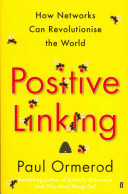The economic crisis that started in 2007 exposed deep flaws in conventional macroeconomics. This was wonderfully exposed by Adair Turner, as I have posted before. But many of the macroeconomics’s big beasts seem to plough on regardless. Most shameless of these is Nobel Laureate and New York Times columnist Paul Krugman. This has become apparent in the latest kerfuffle to take the world of macroeconomists: the idea of “secular stagnation”.
This can get very technical very quickly (indeed the technicality of it is something of a hiding place), and I will try to spare my readers of these technical details. The idea of secular stagnation that is the natural rate of interest in many developed economies is less than zero, and has been for some time; since about 2003 according to some, or the 1990s to others. The natural rate of interest is that which is required to balance the supply of savings with their consumption in investment projects. If this rate is negative, then actual interest rates are doomed to be above this rate, and hence not enough investment happens. And because of this, growth rates are dragged down to stagnation levels, while the surplus savings are pumped into assets, creating bubbles, or else excessive debt-fuelled consumption occurs. If you want to read more about there is this excellent article by Gavyn Davies in the FT. This is behind the FT paywall. More accessible in is the speech by Larry Summers, another big beast of old macroeconomics, that set the whole fuss off, which is on YouTube. Unfortunately this takes quite a bit of reading between the lines to understand its implications. And then there is Mr Krugman, who weighs in after the speech with this blog post. This much the most accessible article in all senses – Mr Krugman is one of the best people at explaining economics ideas there is.
Mr Krugman says that his idea encapsulates what he has being saying or feeling for years; and having read him for years, I have no reason to doubt him on that. mr Krugman’s main interest is in an old battle: that between his own liberal-inclined system of “Neo-Keynesian” theory, and the “Neo-Classical” approach favoured by conservatives. To him the crisis and its aftermath simply proves that the Neo-Classicists were wrong. He is right there, but that’s a very old story.
The interesting point is that neo-Keynesianism failed too. It failed for two main reasons. First was that it ignored the implications of the financial system, and levels of debt, in particular. And second it stuck to a theory of money and monetary policy that had barely moved on from the days when most transactions were settled in notes and coins. This blinded them to the scale of the crisis that was building, and blinds them still to the effectiveness of different policy options. In particular they place too much faith in the usefulness of a loose monetary policy, and an obsession with the rate of inflation. Their support for loose fiscal policy is much better grounded. There is not a hint of these problems in Mr Krugman’s writing.
There is something very striking about Mr Krugman’s article. He doesn’t seem that bothered about the forces that driving the economic statistics. There is a bit of speculation that it is something to do with an aging population, but no attempt to get behind the implications of this. Instead he obsesses with good old-fashioned fiscal and monetary policy: the idea being that we need to fix short term problems, and that the more fundamental, structural issues, such as inequality, finance and the efficiency of government, can be fixed in due course later. His signature policy idea is that the rate of inflation should be raised deliberately so that negative real interest rates can rise, which will then help the economy back to growth. Mr Krugman has long advocated just such a policy for Japan and feels entirely vindicated that the Japanese Prime Minister Shinzo Abe is now following his advice.
This insouciance towards the details of what is happening to economies is quite wrong-headed, though. He is right that growth rates in the developed world are stagnating, and that this problem dates back to well before the crisis of 2007. But we need to have a better idea of why. If it is for fundamental reasons, such as demographics and the changed nature of technological innovation, what is the point trying to take the economy to a place that it cannot go sustainably? And surely policy solutions must be sensitive to the complexities of an evolving economy? If labour markets work in a very different way, thanks to technological change and globalisation, then the old assumptions about inflation could be wrong. We are in danger of misreading the implications of a low inflation rate, and policies designed to increase its level could have malign effects. In Japan, employers are refusing to raise wages in the face of increased inflation expectations, so Mr Abe’s policy is starting to unravel.
Mr Krugman comes through as gloriously irrelevant to modern policymakers. Right some of the time, wrong on other occasions, and with nothing to say on many crucial questions, his ideas are so disconnected from the realities of the modern economy that they have become quite useless. Macroeconomics needs to learn and move on. The likes of Mr Krugman and Mr Summers should either embrace new ideas or bow out.
